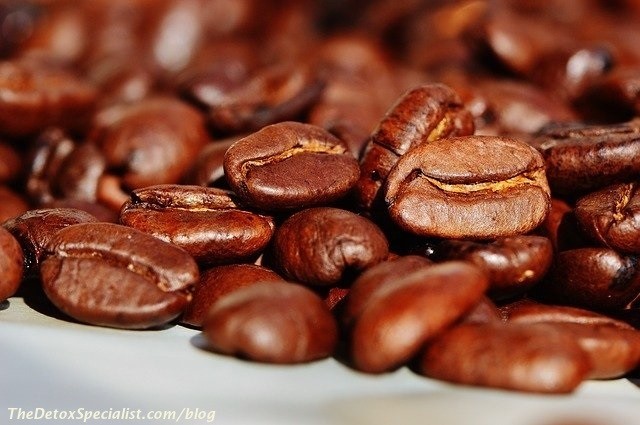
Coffee is one of the most popular beverages in the world. Much of the storied goodness of coffee comes from caffeine, a stimulant. Caffeine is also the most commonly consumed psychoactive substance in the world, of course, by way of coffee.
This is also a reason why attempts to detox from caffeine can be very difficult. People form a physical as well as a mental dependence on caffeine. And even though there are some touted health benefits of coffee, dependence on caffeine is a real health problem.
When preparing for a caffeine detox, it is best to know the expected effects. Depending on your daily consumption, caffeine withdrawal can show up as a headache, tremors, fatigue, difficulty in concentrating, depression, and anxiety.
Sounds pretty much like a drug, right? That’s all the more reason why you should do a caffeine detox. Even if you think you can “quit whenever you want,” now is the time to test your resolve. So here are some ideas to help you quit caffeine while minimizing its withdrawal symptoms.
1. Familiarize Yourself With Things That Have Caffeine
It is very likely that coffee isn’t your only source of caffeine. Tea, for example, has caffeine in it, although to a lower concentration. Other common sources include energy drinks, many soft drinks and sodas, some pain relievers, and some prescription drugs. When you detox, make sure you don’t end up substituting one source of caffeine with another.
2. Wean Yourself Off Caffeine
Slowly reducing your caffeine exposure is often the more desirable method. There’s less to worry about withdrawal and it is not as disruptive to the daily schedule. It does, however, require long-term commitment and discipline. You might find yourself tempted to let go. Don’t do that, and stick to the plan. Here are some ideas to try:
- Switch to a coffee with lower caffeine content. You can start by switching one cup a day to a lower caffeine coffee. Then switch another cup every 2-3 days, until you’re completely on decaf.
- Another method is to follow the same path, but switch to a cup of tea. Though there is caffeine there as well, it is in a lower concentration. Besides, giving up on tea is usually easier than coffee. Once you’ve switched to tea, reduce it by half or one cup every two days.
- Reduce your coffee intake. Every 2-3 days, remove a quarter cup of coffee from your diet. This can be difficult if you don’t brew your own coffee, in which case, consider one of the methods above.
- If you’re using energy drinks, reduce consumption by a quarter every 3-4 days.
- Soft drink or soda consumption can be reduced by half or one-third every 2 days.
- Those with caffeine-based medication can ask their doctor for possible alternatives.
3. Stay Hydrated
Staying hydrated helps flush toxins from the body and keeps you more comfortable. For those reducing their coffee intake, drinking more water is the way to go. The water content of your coffee counts, even if caffeine is considered a diuretic. So as you start reducing your coffee (or energy drink and soda) consumption, balance it by drinking more water.
Related reading: Detox Water Recipes for Everyday Drinking
Hydrating well also reduces the chances of withdrawal symptoms like fatigue and headache. These symptoms can also be tied to dehydration, so drink up!
4. Dealing With Withdrawal
Even if you slowly wean yourself off coffee, there is a small chance of some withdrawal symptoms showing up. If you feel fatigued, make sure to get plenty of rest at night. In case of headaches, make sure the pain reliever of choice does not have caffeine. Some popular ones like Excedrin have caffeine. It might be a good option to consider ibuprofen and water.
5. Quitting Cold Turkey
Saying buh-bye to caffeine in one go is a viable method. It can also be very excruciating for the first 3-4 days. Rather than weaning off caffeine, you give it up all in one go. It can be effective for many people. Depending on your caffeine consumption, it is also likely to bring on the full force of withdrawal symptoms.
It is important to make some preparation so the withdrawal doesn’t force you back into the habit. Here are some things to prepare and be mindful of.
- Time yourself right. It is better to start on a weekend when you can better control your surroundings, rather than being irritable, distracted, or otherwise troubled on a workday.
- Avoid driving for 2-3 days, depending on how the withdrawal symptoms appear. Being distracted, getting tremors, or splitting headaches while driving can be extremely dangerous.
- Stock up with necessities at home so you don’t have to leave (or drive) to get things like groceries or food. It is worthwhile to consider a healthy, fiber-rich diet for a few days.
- Let your family and friends know so that they can be supportive or take a constructive role during the withdrawal. It is also useful to inform your coworkers about your detox, so they know what to expect.
- It can be a tough few days, but going back into the habit won’t help!
6. Going Back To Caffeine After Detox
You may choose to drink coffee again after the detox. But remember that building up bad habits again isn’t constructive or useful. If your love for caffeine came from energy drinks or soda, it’s a far healthier option not to start again. Enjoying some coffee in moderation is okay, but even so, consider staying at the lower end of the spectrum.
Author Bio:
Harsh is the chief writer at CoffeeUrban. He’s passionate about coffee culture, and all the roads that lead to, and from it.



